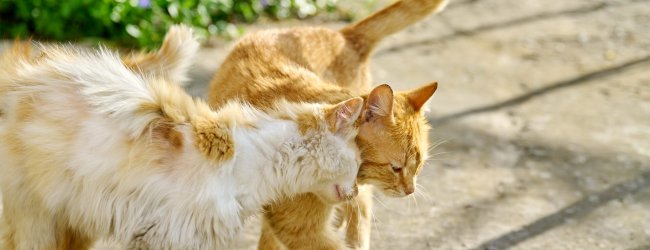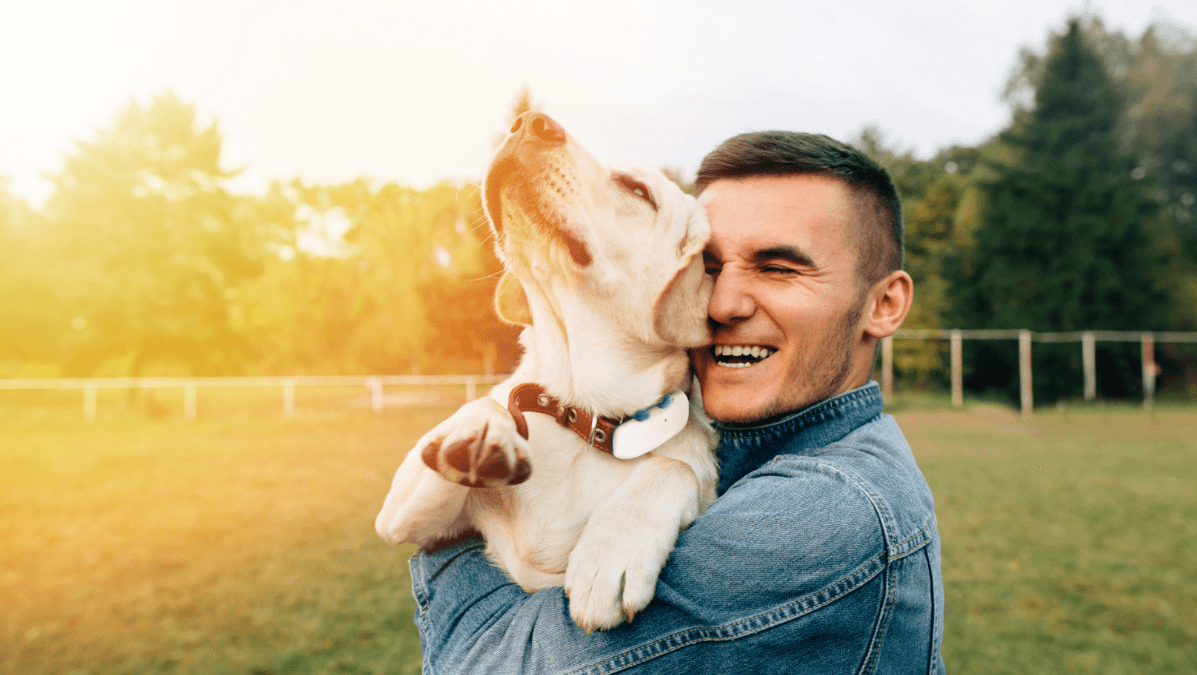9 Cat Sleeping Positions & Their Meanings
Curled up or sprawled out, your cat’s sleeping position can reveal their unique personality.
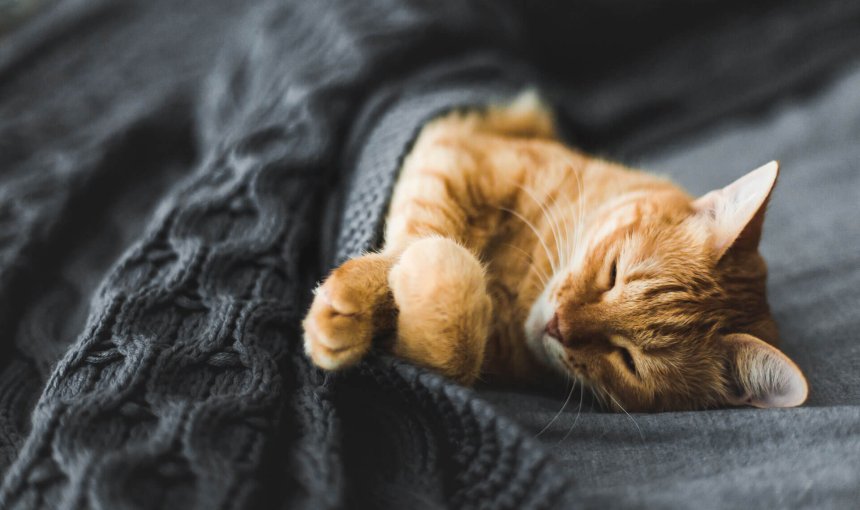
Cats are well-known as expert snoozers. After all, cats even have a type of nap named after them! Whether your kitty is taking a catnap or is in a deep sleep, they often rest in adorable or just plain weird sleeping positions. Let’s explore what these cat sleeping positions mean in this post – and how tracking your cat’s sleep can help you stay on top of their health and wellbeing.
Are cat sleeping positions important?
Your cat’s sleeping positions can give you clues to their likes, dislikes, comfort level – and how much they trust you. (Like a type of body language.) Besides, these might be affected by the season, what’s going on in your home, and your cat’s overall mood.
But why do cats sleep in certain positions? It has to do with their evolutionary history.
Your cat’s wild ancestors are hunters (and technically, so is your kitty). So like their wild cousins, cats may sleep lightly and be semi-alert while dozing.
- Their instincts guide them to stay aware of approaching predators or prey. This is a behavior that’s hard-wired into your kitty.
- So even though your furball isn’t prowling the savannah for a meal, they may still have the sleep habits of a wild cat.
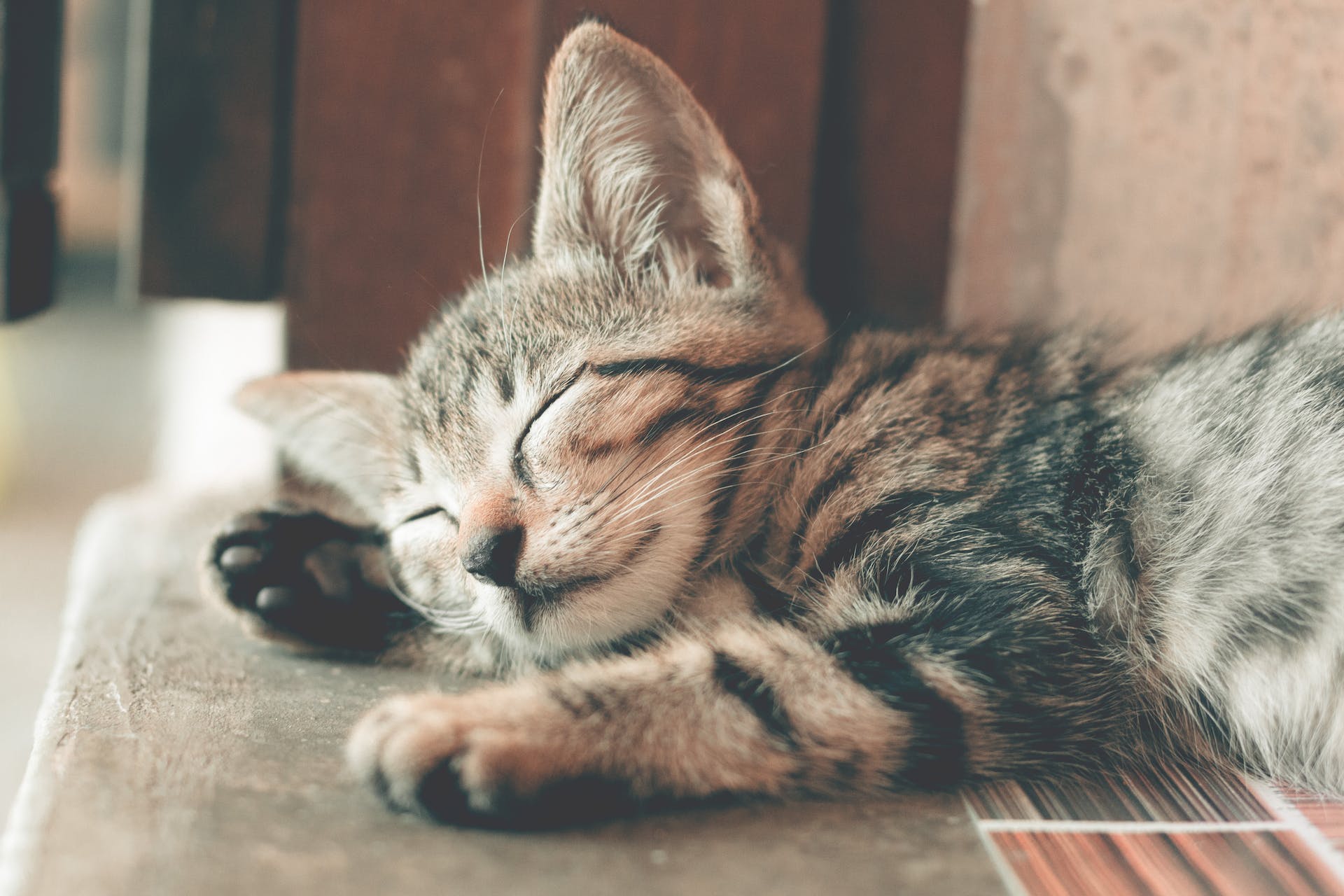
⚠️ Cats who are unwell may suffer from poor sleep. They might toss and turn and have a hard time getting comfortable. So pay attention to how, when, and where your cat sleeps can give clues to their general health.
Of course, it’s possible that your cat’s sleeping positions have no underlying secret meaning. Your cat may just be trying to get as cozy as possible! In fact, cats sleep from 12-18 hours per day. So it makes sense that they would seek the ultimate in comfort and security for this important endeavor.
So let’s dive right in. Here are some common cat sleeping positions and what your cat might be trying to communicate.
Common cat sleeping positions & what they mean
Cats are adorable 99% of the time, and even cuter when they are asleep. Some cat sleeping positions perfectly embody the self-assured yet goofy demeanor of our kitty cats. All cat breeds demonstrate these cat sleeping positions.
Here are nine of the most common cat sleeping positions. (And what they could be telling you about your cat’s personality.)
1. Cat loaf
Can a cat resemble a loaf of bread? Well yes, if they are snoozing while sitting upright in the classic Cat Loaf position. Aka, with the front and back legs tucked neatly under the body and the head upright in a sphinxlike pose. Your cat is probably taking a quick cat nap and is not in a deep sleep. In the Cat Loaf position, your kitty is still alert to their surroundings while appearing completely chill. (It’s actually how they protect their vitals from a potential predator.)
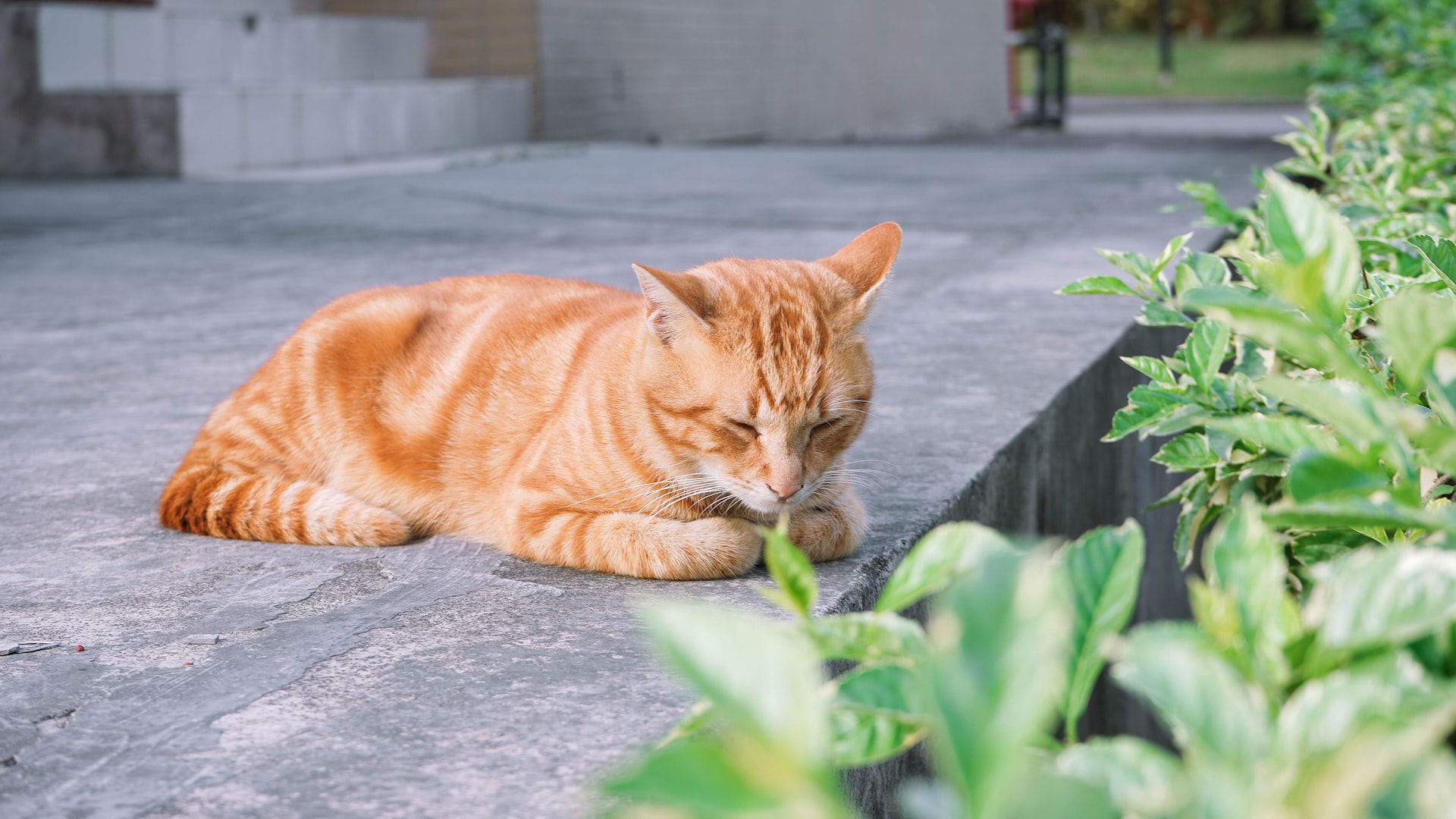
While in the Cat Loaf position, your furball is also conserving body heat. That’s why the Cat Loaf may become a preferred sleeping position when the weather turns cold.
Ever wondered why cats sleep with you? (Hint: one of the reasons you’ll end up with a cat in bed with you is your body heat.)
2. Belly up
Sleeping with the tummy facing the sky means your cat trusts you and their environment. Exposing the belly makes a cat quite vulnerable because their vital organs are unprotected. Only when a cat is completely at ease will they sleep Belly Up. This sleeping position can also help your cat to cool off in warm weather, because the belly has less fur and loses heat more rapidly than the rest of the body.
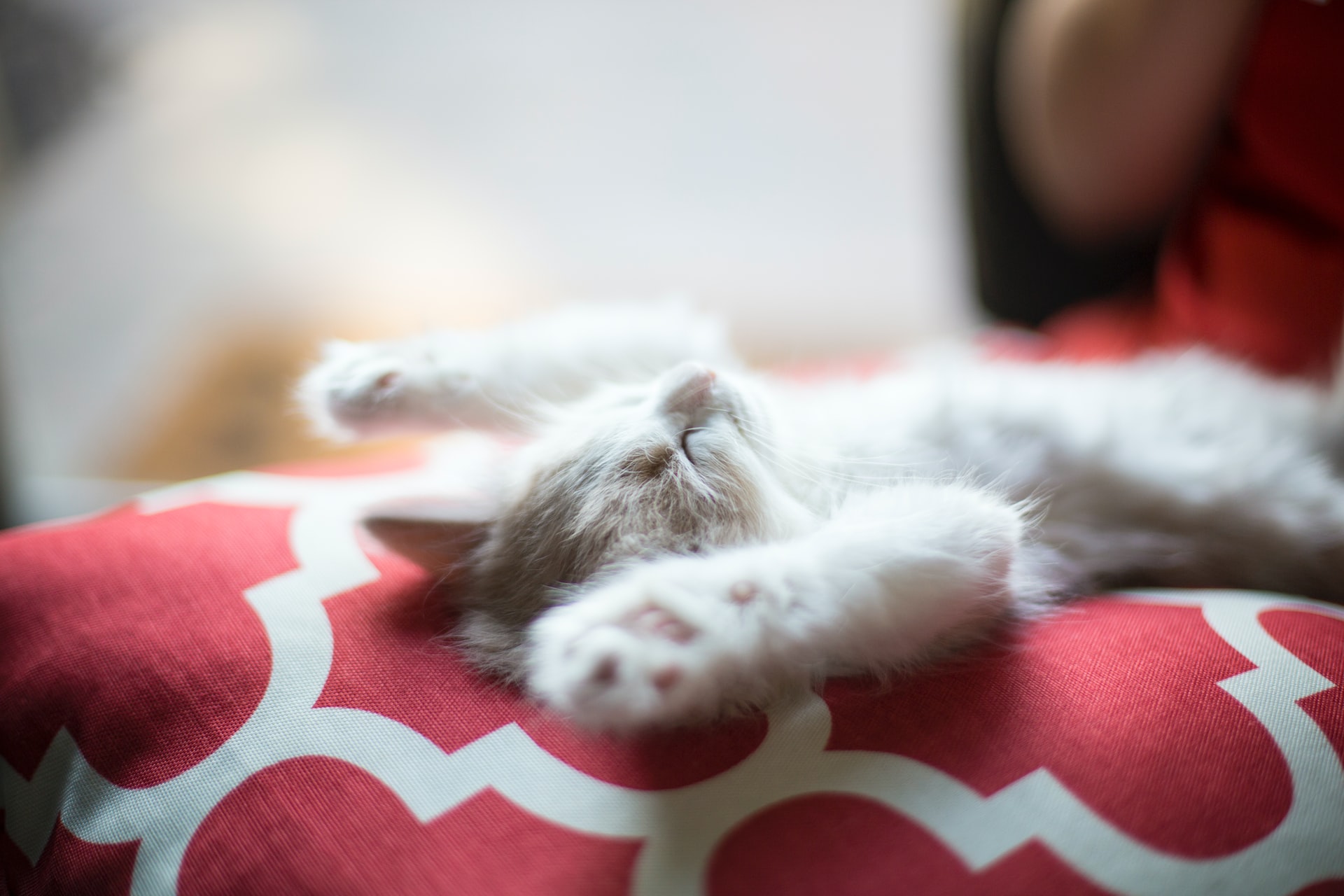
If your kitty sleeps in the Belly Up position, they are telling you that they feel relaxed and safe. We dare you to walk past a cat in this adorable position and not rub their belly. Just be prepared to pay the price with a little nip from your startled cat!
3. Superman
A sleeping cat lying belly down with the front legs stretched forward and the hind legs extended backward is in the Superman position. Sometimes, a cat splayed on a tile floor in the Superman sleeping position is trying to cool off.
In general, a cat in the Superman sleeping position is relaxed, unafraid of being bothered, and headed for a well-deserved superhero snooze.
4. Crescent
The Crescent sleeping position, also called the Tight Curl or Donut, is the most common sleeping position for cats. Your kitty will lie on their side curled in a ball, with the head touching the back feet and the tail tucked in. In a variation of the Crescent position, your cat might twist their neck so the top of their head is resting on the ground, and the chin is pointed to the sky.
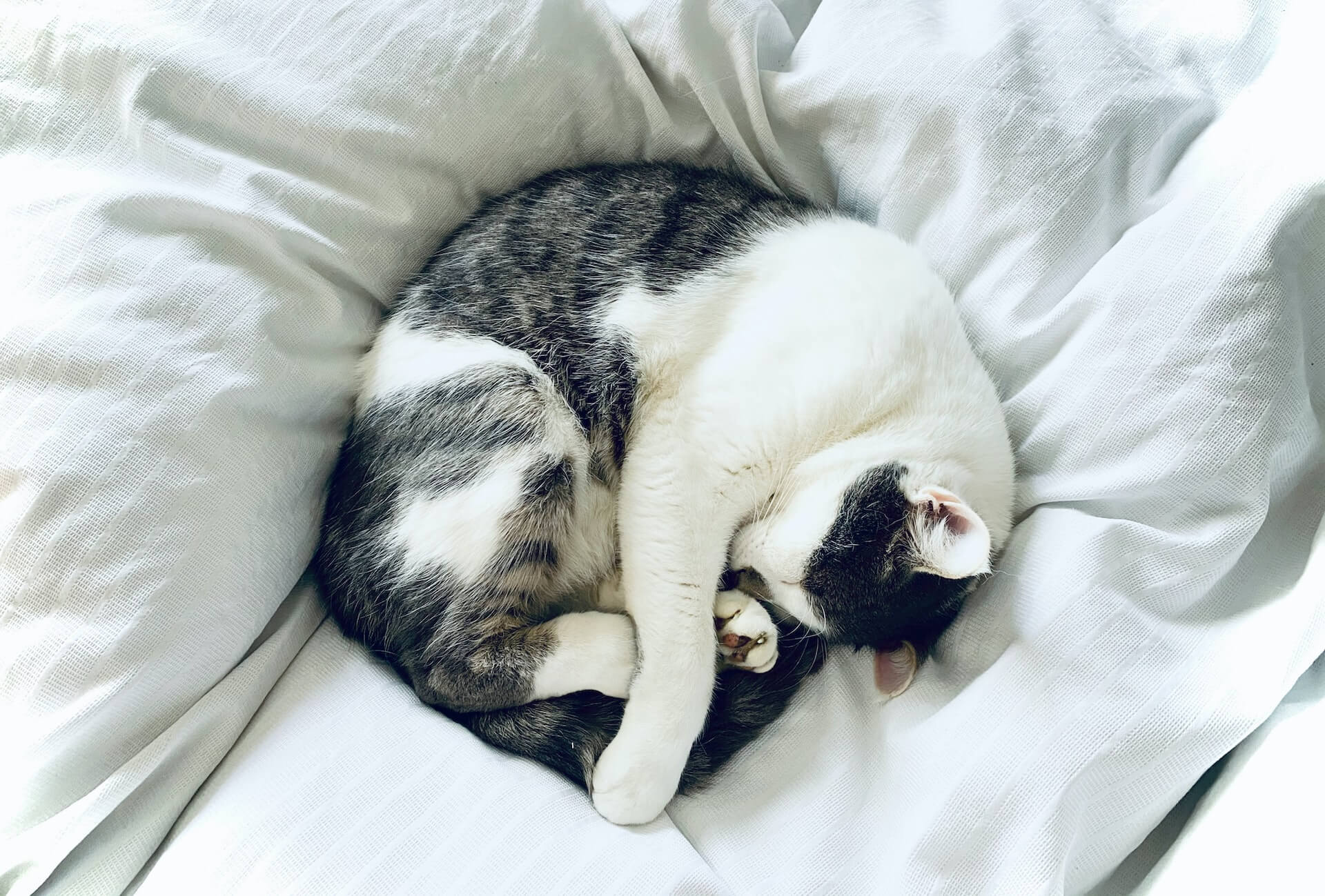
The Crescent position allows your cat to conserve body heat, so you are more likely to see your cat in this position during the winter or in cold weather.
Similarly, most wild cats sleep in the Crescent position, because it protects the belly – which is the cat’s most vulnerable area – from predator attacks. Even though your home has no wolves or hyenas roaming the hallways, the instinct to curl up and protect their vital organs is still present in our furry friends today.
5. Side sprawl
The Side Sprawl is a very common cat sleeping position. A cat lying on its side is probably in a deep sleep and might stay in this comfy position for a while. The Side Sprawl partially exposes the cat’s belly, so it could indicate that your kitty is trusting and relaxed in your home, and is not worried about a sneak attack.
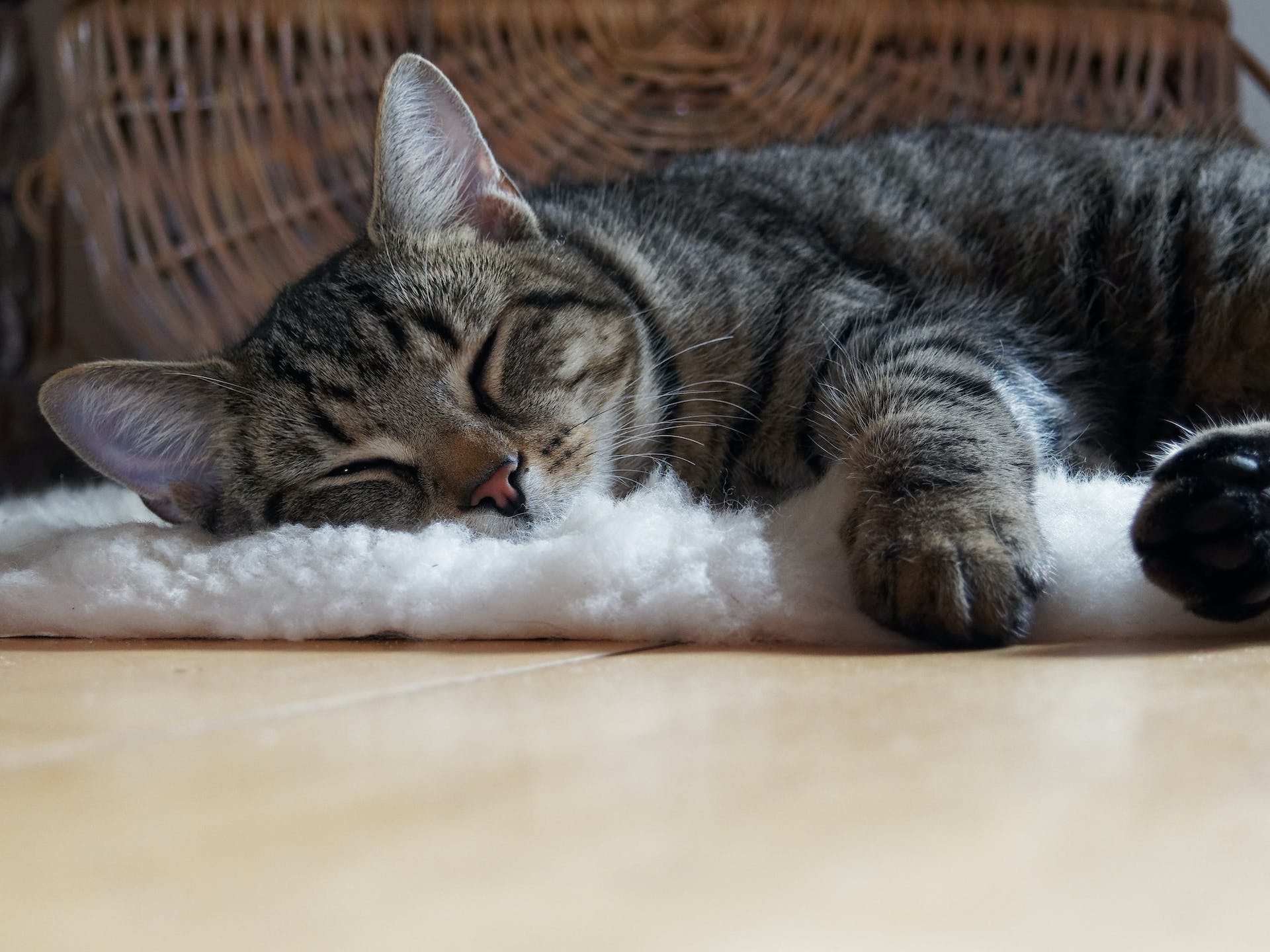
Cats that are feeling overly warm may lie in a cool spot in the Side Sprawl position in an effort to cool off.
6. Monorail
Cats are predators, and as such, they like to perch up high to keep an eye out for potential prey or threats. In the Monorail sleeping position, cats lie lengthwise on an elevated surface such as a sofa arm, a handrail, or a windowsill.
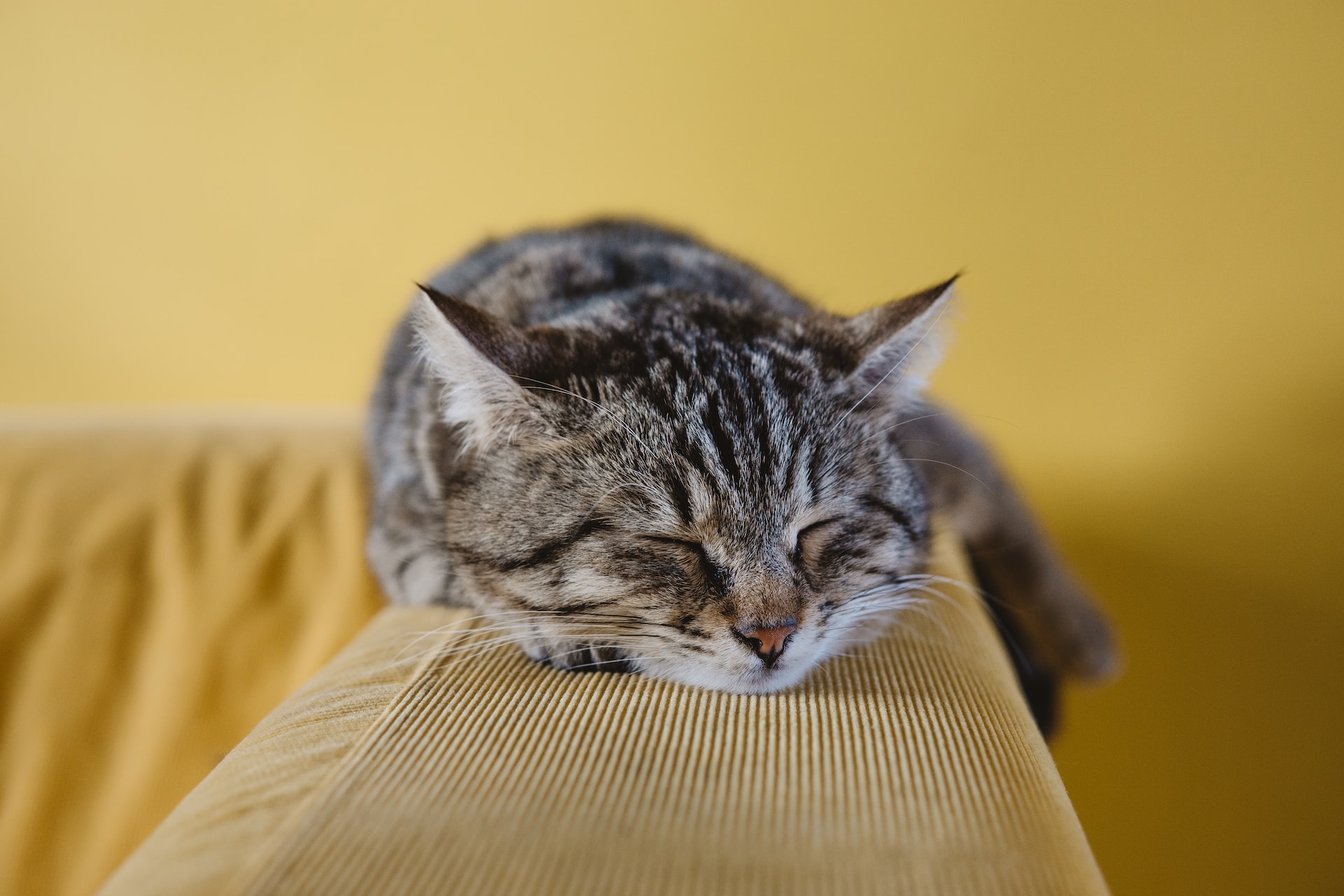
The cat’s front legs, back legs, and tail hang down on either side, similar to a monorail train parked on its elevated track. While your cat probably intends to remain alert for threats while in the Monorail sleeping position, the urge to drift off into a light sleep could be too hard to resist. After all, *yawn* there aren’t any threats to deal with at the moment, right? Zzzzzzzz.
7. Pretzel
When your cat sprawls out and twists their torso so the upper body points in one direction and the lower body faces the opposite direction, they are in the Pretzel position, also known as the Contortionist. It’s not really possible for your kitty to tie themselves in a knot, even though it may look like it when they are in the Pretzel sleeping position.
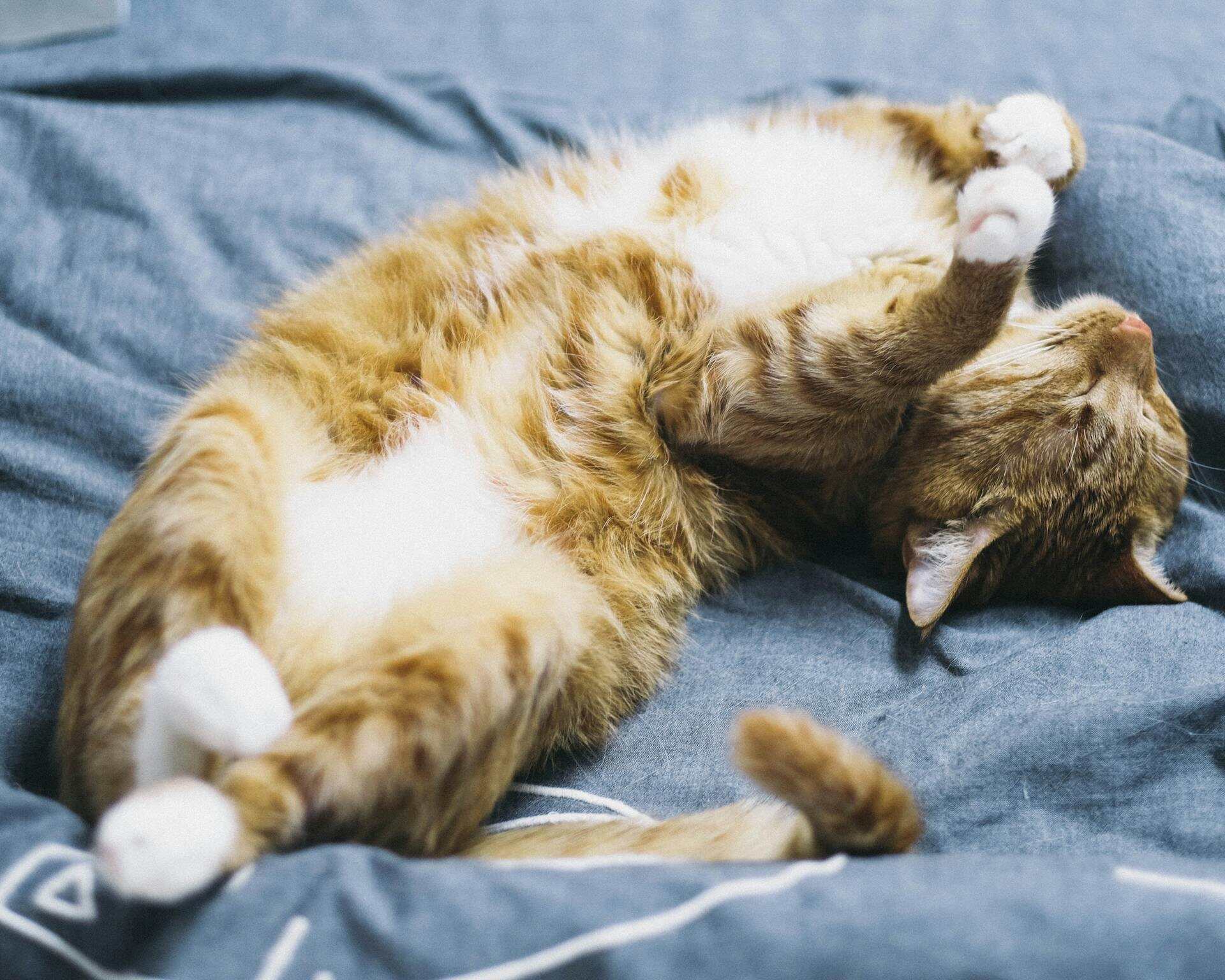
The Pretzel position, like the Belly Up position, indicates that your cat is completely relaxed and trusting in their environment. While in the Pretzel position, a cat may be in a deep sleep, but they can still spring into action instantly if you give them a gentle poke in the belly. (Trust us, we’ve tried it.)
9 Dog Sleeping Positions and What They Mean
8. Paw over the face
One of the most endearing cat sleeping positions is Paw Over The Face, when your kitty dozes off with a furry paw covering their face or eyes. In the Paw Over The Face sleeping position, your cat is sending a clear message that they do not want to be disturbed while they are asleep.
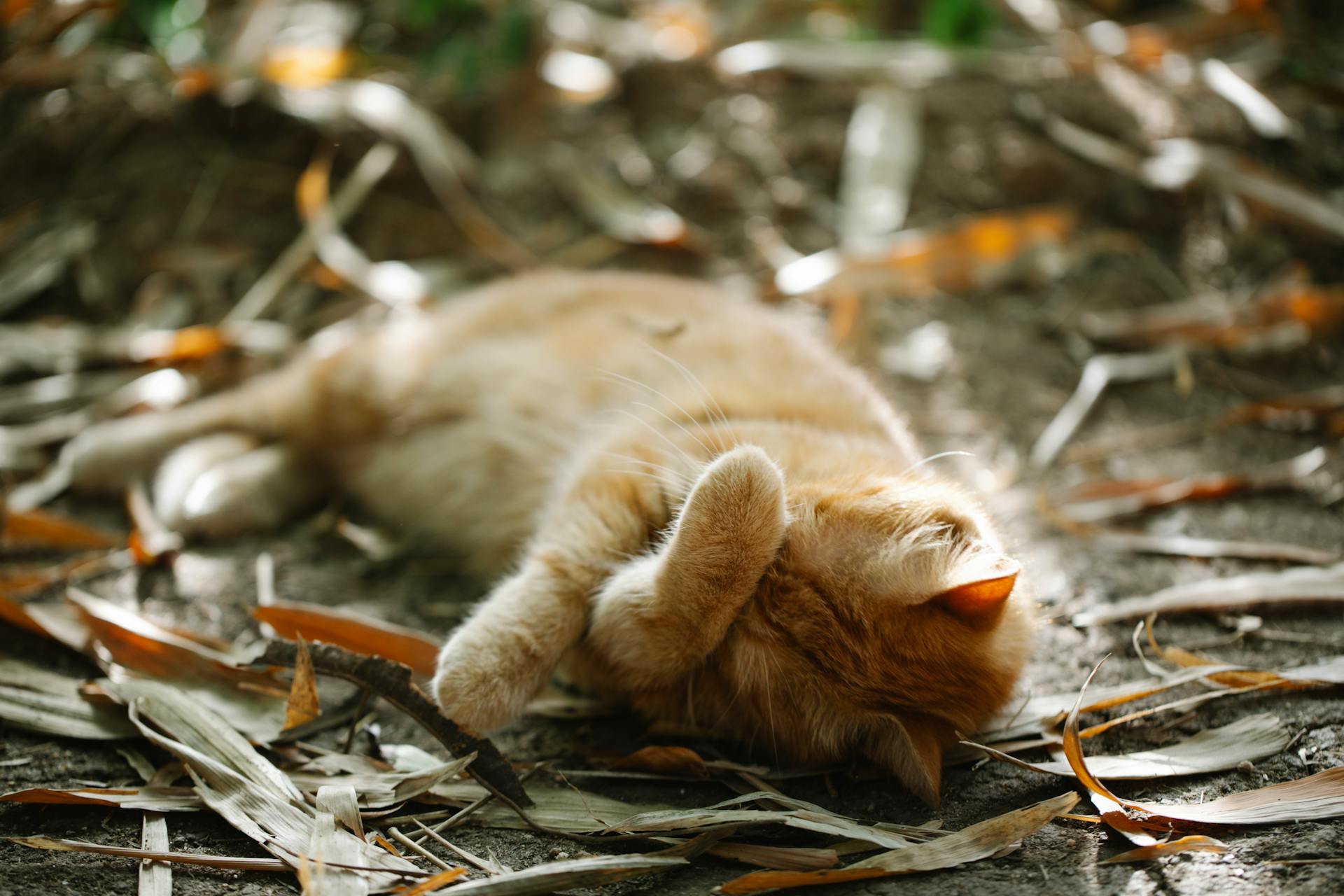
If you see your cat with their paws covering their face, think of it as your kitty wearing an eye mask to bed, attempting to keep disturbances to a minimum while they get their beauty rest.
9. Eyes barely open
A cat that is snoozing with their eyes open to little slits is only half-asleep. They are still on the lookout for danger, potential threats, or even the chance to pounce on a meal. This behavior is linked to your kitty’s wild origins, where cats of all types have to find their own food and avoid becoming food for someone else.
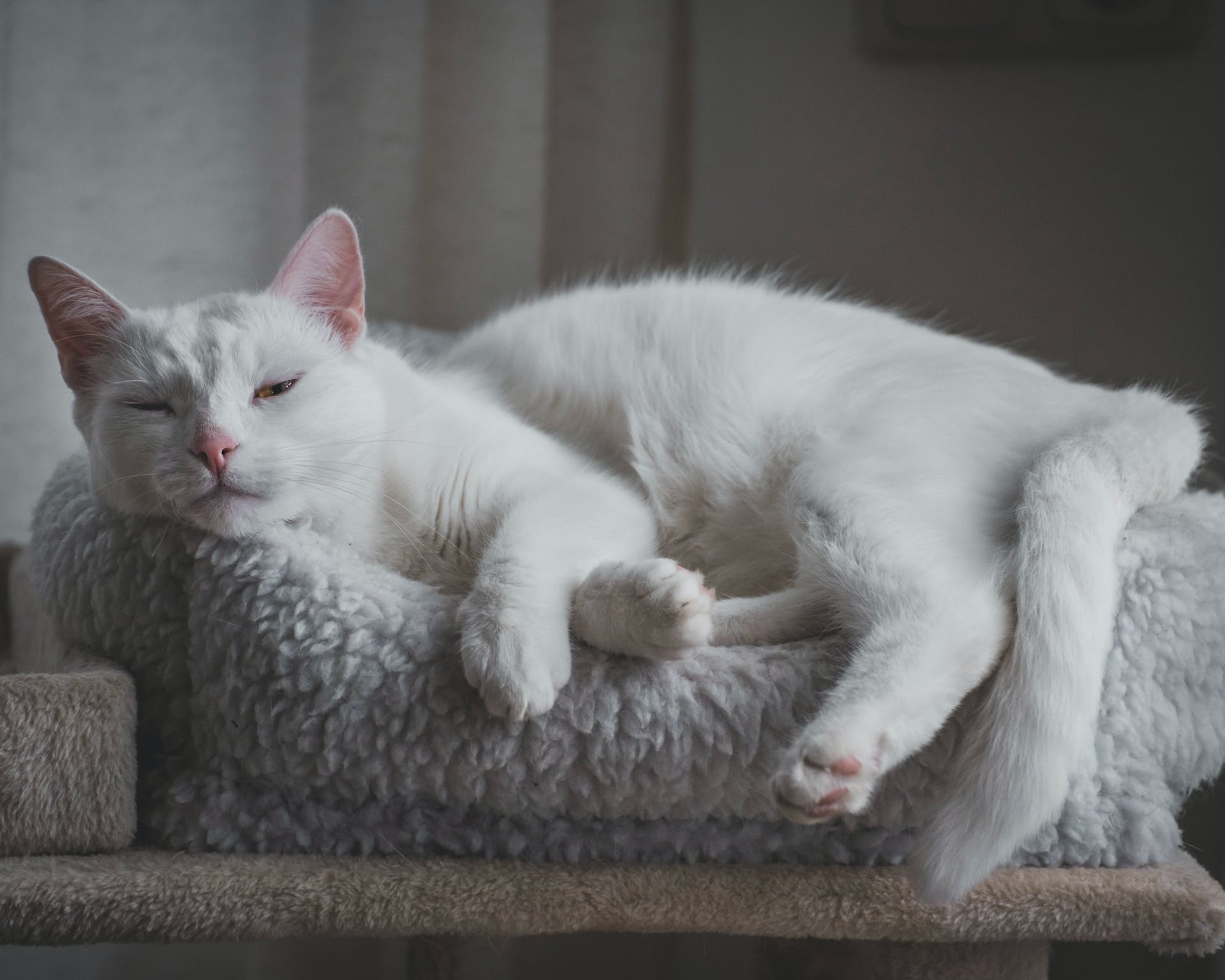
The Eyes Barely Open sleeping position is often combined with the Cat Loaf sleeping position. Snoozing in the Eyes Barely Open position allows your furry friend to be semi-alert while getting a little rest.
Frequently Asked Questions
What is the most comfortable sleeping position for a cat?
You know your cat best, so whatever sleeping position they choose is obviously the best one for them at the moment. Cat sleep can range from light dozing to a deep snooze, so their sleeping position will depend on what type of sleep they require in their current situation.
The household environment can influence your cat’s sleeping position, too.
- If it’s chilly, they may choose the Crescent sleeping position to conserve heat.
- In hot weather, the Pretzel may help them to keep cool.
If your cat feels threatened, for example by another cat in the home or strangers visiting the house, they may choose the Cat Loaf so they can remain semi-alert for danger.
Why is my cat sleeping in a weird position?
Cats have very flexible bodies, an adaptation for their hunting abilities. This means that kitties can contort themselves into odd sleeping positions that would be terribly uncomfortable for a human.
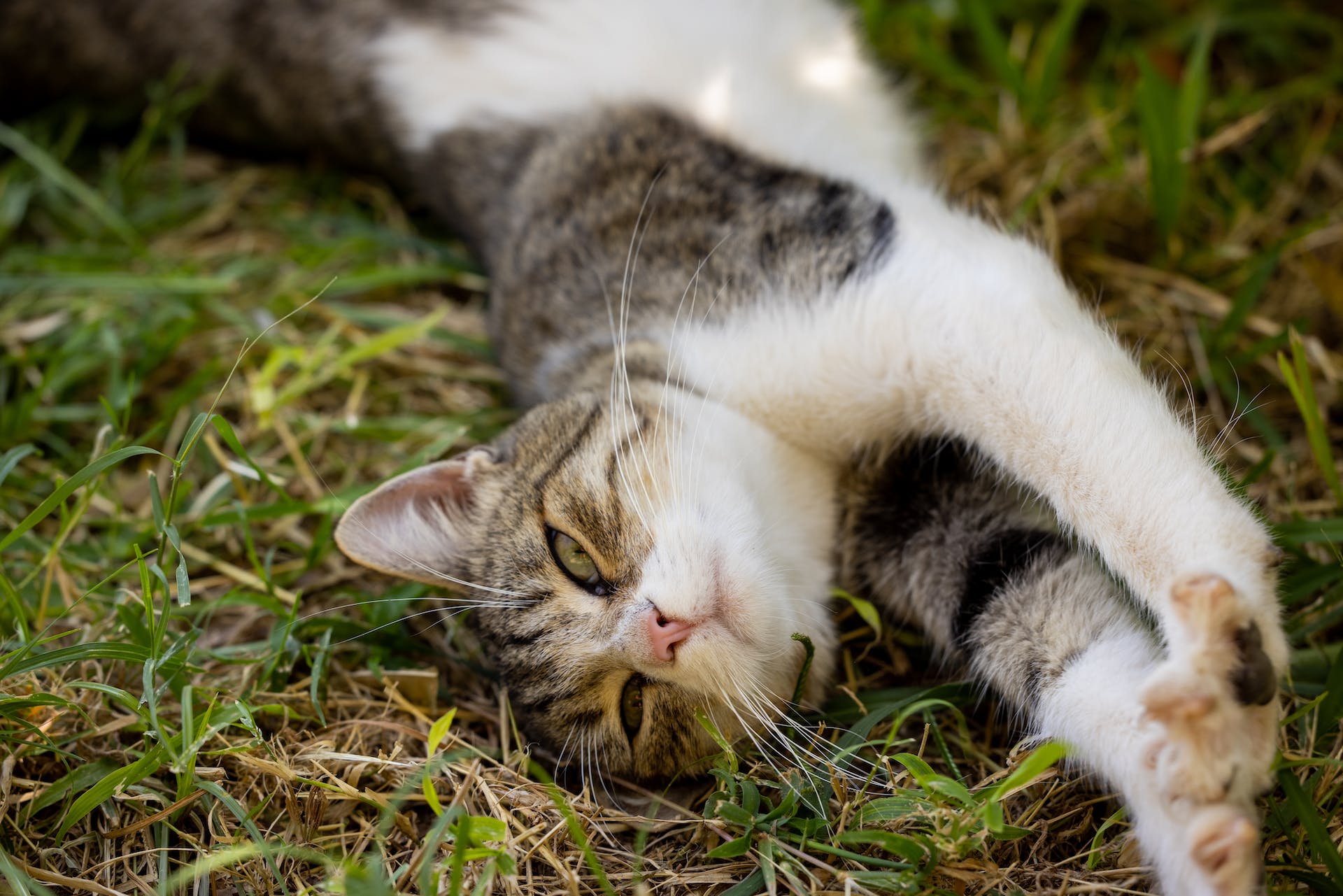
But a cat is a cat, not a human, so who are we to judge?
Is it normal for a cat to be sleeping on top of you?
Cats are famous for putting their personal comfort first and the needs of others second. When your cat sleeps on your lap, are they communicating their affection for you or just using your warm body as their personal heating pad?
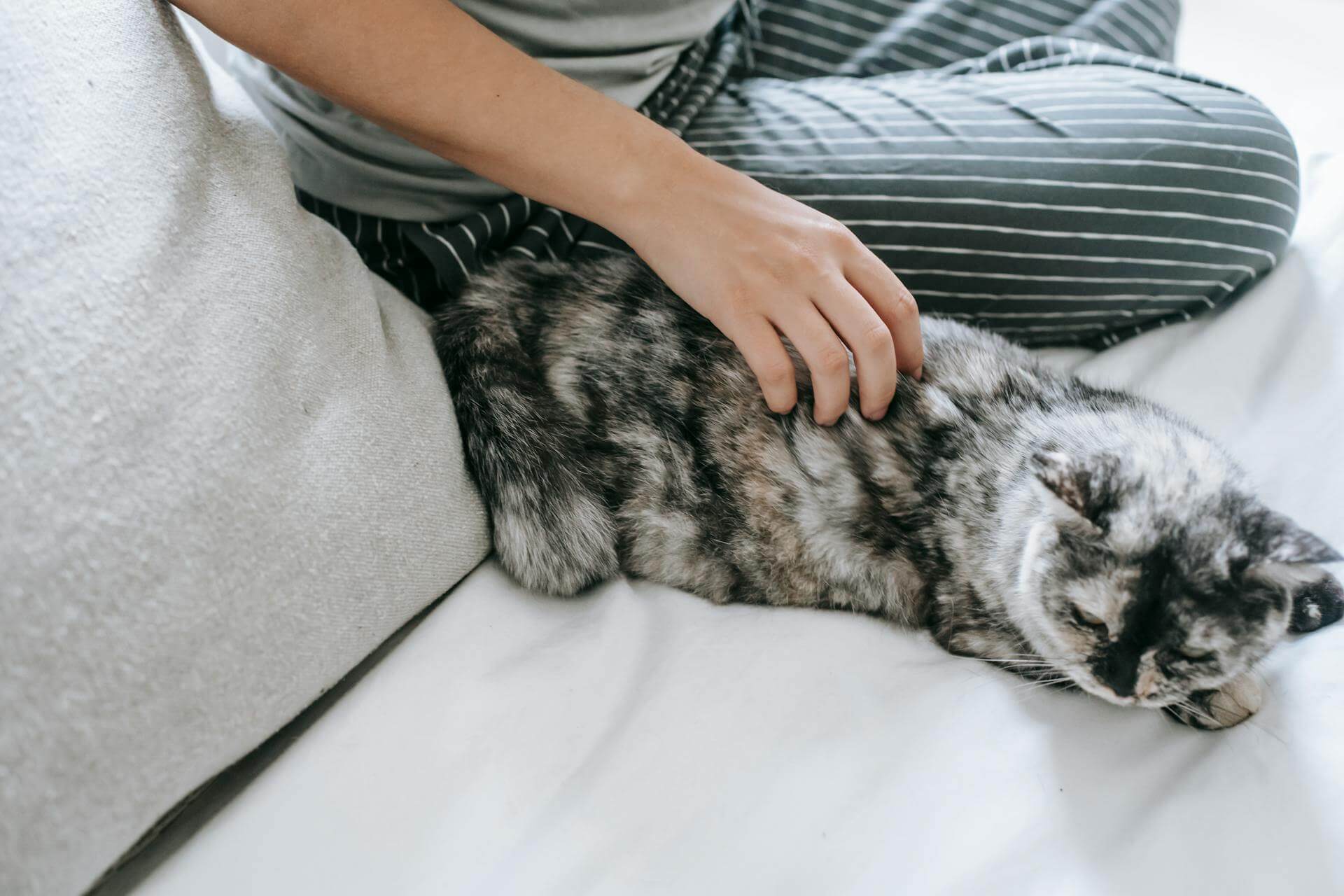
It’s hard to tell, but we’re going with affection.
Is it normal for a cat to sleep in a box?
Cats have odd sleeping habits, and one of them is wedging themselves into tight spaces at naptime. An empty box is like a magnet for cats. Don’t be surprised if your kitty claims the box instantly and curls up inside, even if the box is a few sizes too small. Cats also select bathroom sinks, large bowls, shoes, suitcases, backpacks, and other tiny spaces for snoozing.
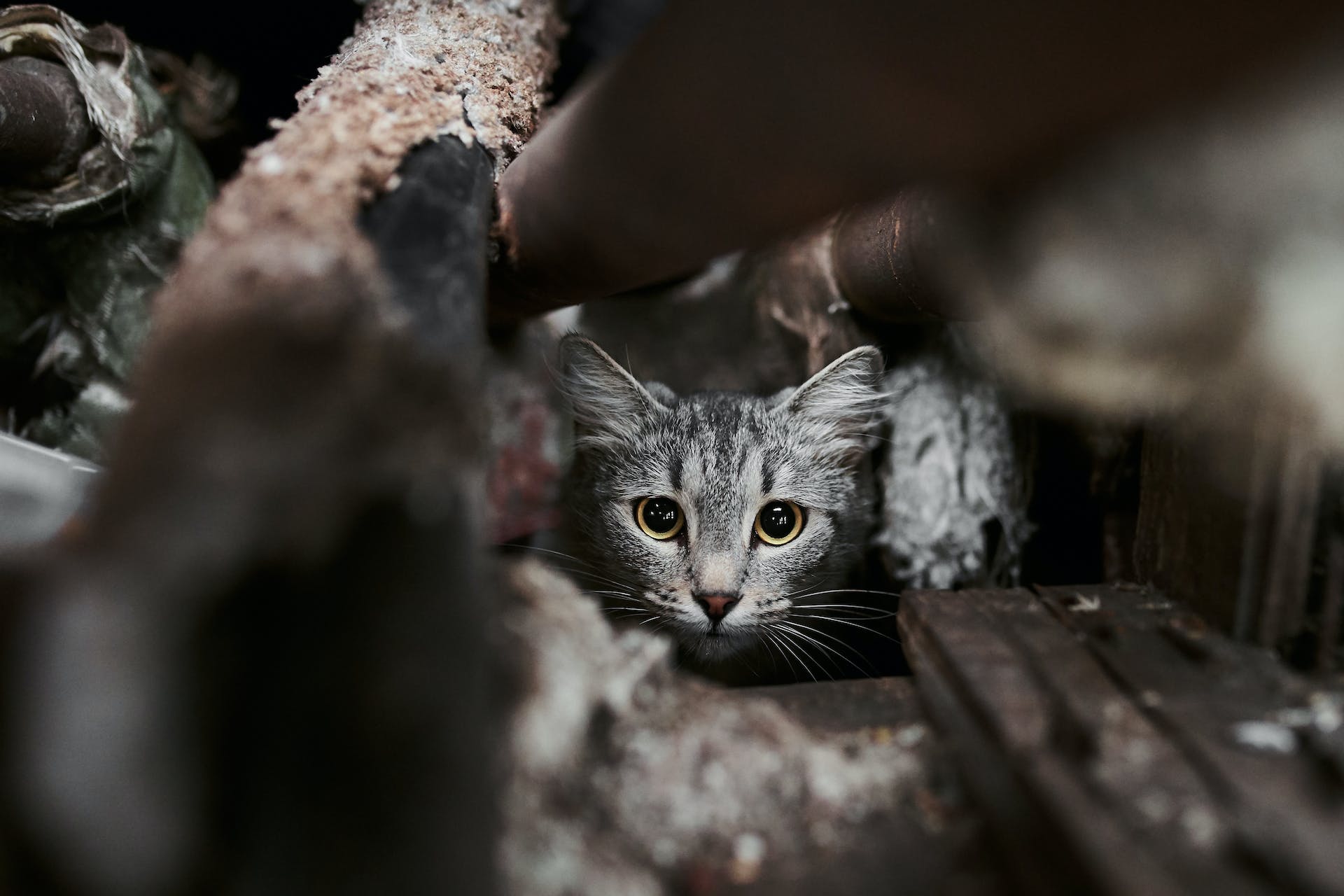
Choosing small spaces for sleep creates a sense of security for your cat. Cats love the feeling of being surrounded by walls or coverings because it helps them feel protected and safe. Sleeping in a tight space can also help your kitty conserve body heat in cold weather or provide a buffer in a noisy home with lots of activity.
Why do cats frequently rotate their sleeping spots?
Cats love to have multiple favorite sleeping spots in your home. In general, sleep is a vulnerable time for all creatures. The habit of rotating sleeping spots could be traced to the behaviors of cats’ wild ancestors, who often live solitary lives and must always elude predators. Returning night after night to the same sleeping area could prove dangerous to a wild cat.
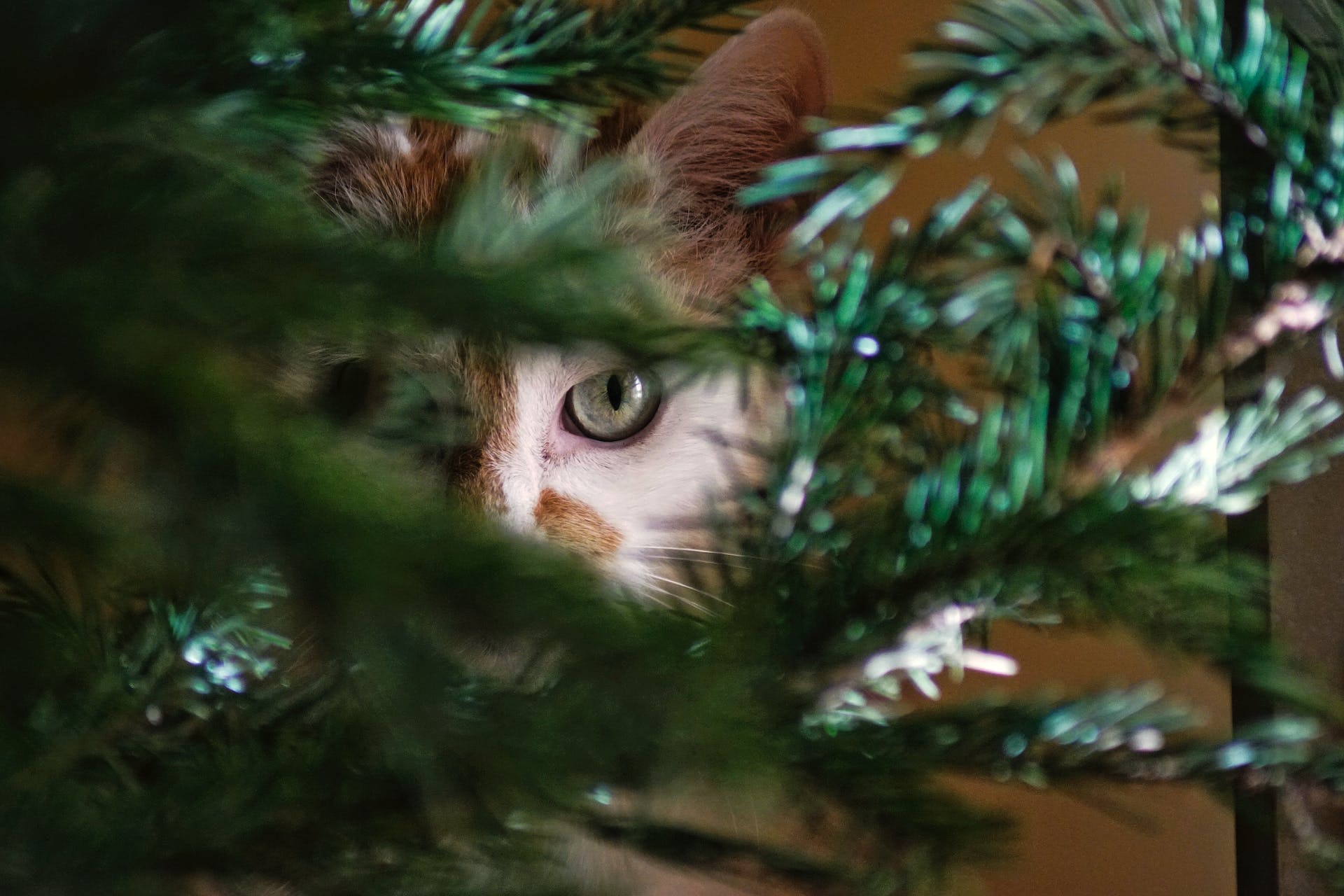
Or, your cat may be responding to circumstances in the household when they rotate their sleeping spots.
- Are there noisy children that kitty wants to get away from, so they choose to wiggle under your bed?
- Or are they trying to get closer to you, their favorite human, while you watch TV?
- They may want to be near their food dish and away from the litter box.
- Your cat could also be responding to changes in temperature, the length of daylight, or other subtle alterations in their environment that you may not even notice.
Read more: Why is my cat hiding?
Should I be worried about the way my cat sleeps?
If you notice a drastic change in your cat’s sleeping habits, it might be a good idea to talk to your veterinarian. If your cat appears restless or uncomfortable when sleeping, they may have an illness or injury. It’s best to let your vet determine if there is an underlying reason for your furry friend’s disturbed sleep.
⚠️ One of the first signs of cognitive dysfunction syndrome in cats is a change in their sleep-wake cycles.2 You’ll find this most commonly in senior cats, who are also more vulnerable to cat dementia.
But how do you catch on to changes in your cat’s sleeping habits in the first place? (It’s not like you can stay up all night watching them toss and turn.)
The solution: Sleep tracking
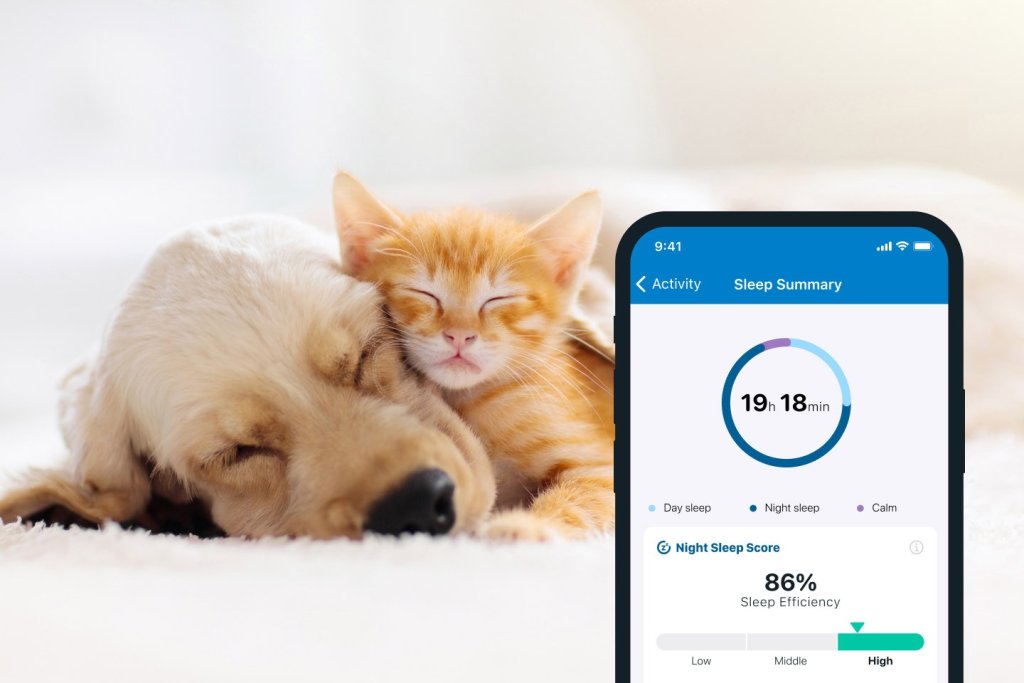
With regular Sleep Tracking, you can get a clear picture of how much quality sleep your cat’s getting – including how often they were disturbed. Which can help you pick up on a drop in your cat’s sleep quality – and take action right when your cat needs it best.
Because of their evolutionary instincts, cats are more likely to mask their signs of illness – or even hide away from you to handle it themselves. At which point, their health condition might’ve worsened.
But if you’re tracking their sleep and activity on a regular basis, you can catch on to a change that much faster. (And get them to vet just in time.)
Cat parents around the world are investing in Tractive’s lifesaving technology to monitor their feline friends’ health and wellbeing. Tracking your cat’s sleep helps you take a more active role in keeping them healthy, happy, and by your side for that much longer.
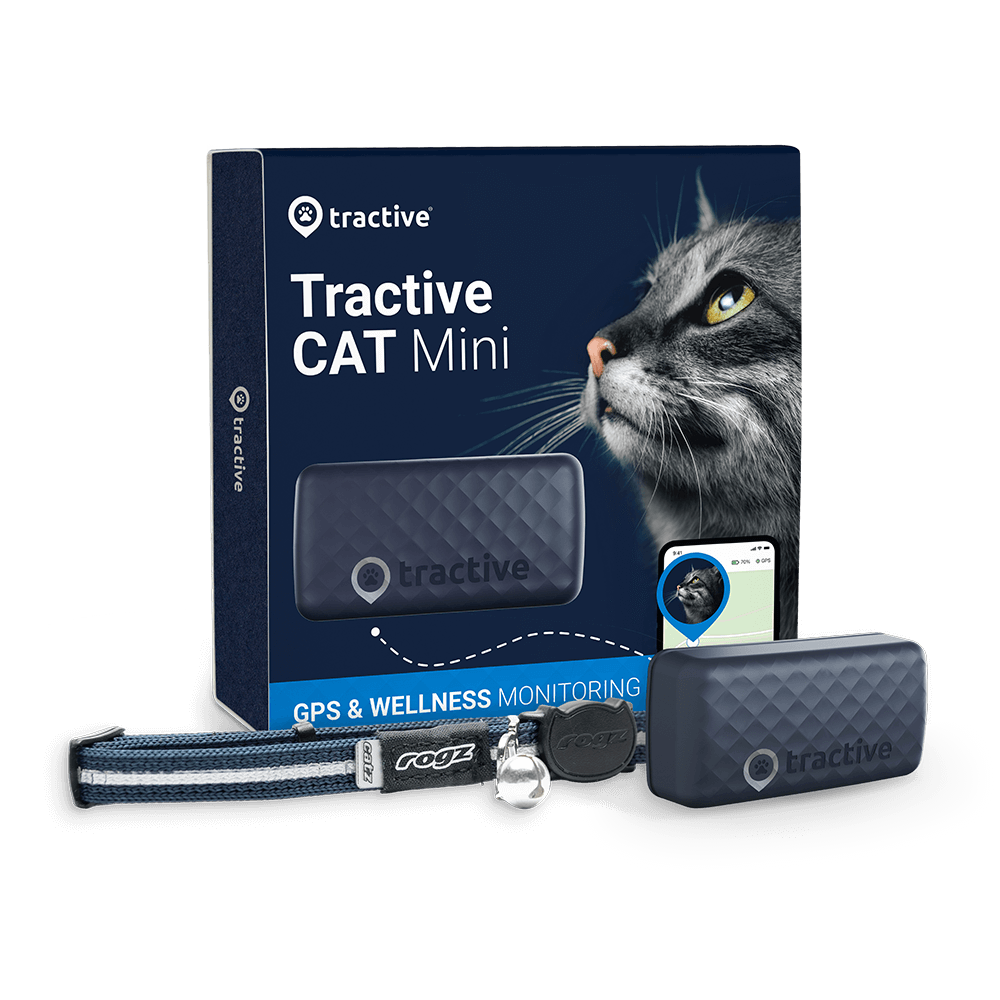
Track your cat’s wellbeing
See how they’re doing at a glance with Wellness Score. Know if they’re getting enough exercise. Spot nap patterns. Detect issues early and keep them healthy.

“Tractive is my #1 recommendation when it comes to cat trackers. It’s specifically designed for tracking cats so you are sure that it is safe for your cats to use.”
– Clair Chesterman, Owner of CFA and CCA-registered cattery and fostering company, FluffyMeowPaws3
Tracking your cat’s sleep can even save their life
Even cats who are struggling with sickness or pain might seem normal and healthy. Which makes it easy to miss out on changes in their regular behavior. But here’s what one vigilant Tractive cat parent noticed when she checked her cat’s Wellness profile:
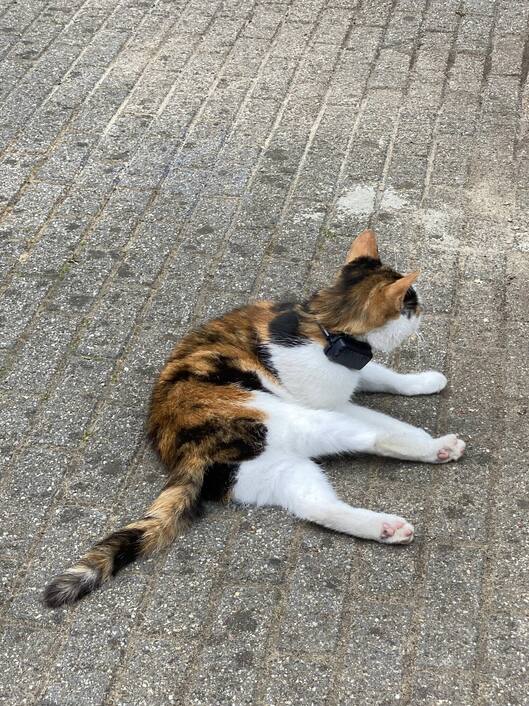
“With the Tractive GPS, I found out one night that she’d only made one little trip to the park, slept all night – and didn’t really do much during the day.
So I decided to check her up to see if she was sick – or had something else going on. When I picked her up, the pus oozed over my hand from the abscess bursting!
Without Tractive, I wouldn’t have noticed it at all. I would still see her walk around to drink and feed and think everything is okay. I might only have noticed when I didn’t see her stroll over for a whole day.
At which point, she’d probably have been dangerously sick.
We went to the vet a few hours later – she had a serious fever, a big abscess, and was pretty sick already. So we got it in time.
A whole week of antibiotics – and now she’s herself again.
Tractive is also very handy for when you need to give your pets their medication. All I have to do is check where she is and call her over to give her the antibiotics.“
– Cissy V, Netherlands
Get Tractive GPS & Health Tracker

– Sebastian Raab, Product Manager at Tractive & occasional pet sitter“It’s pretty difficult tracking every minute of your pet’s sleep. You can watch them run around and play – but it’s not the same during naptime. With a Sleep Alert, you can quickly check if there’s been a significant change in your pet’s sleep patterns. If they’re continuously waking up more than usual or just sleeping less well than before, it could be a sign that something’s wrong.”
Cats are even more lovable when they are asleep.
A sleeping cat is the picture of contentment. And with all these different cat sleeping positions, you might wonder what they mean – or if they mean anything anyway. But usually, it’s a sign your cat trusts you and feels relaxed around you. (Or they’re trying to warm up, cool down, or stay prepared for any potential threat.)
A cat whose sleep is often disturbed might be struggling with sickness or injury – or cognitive decline. So consider tracking their sleep patterns – or letting Tractive’s Health Alerts catch on to a change in your cat’s behaviors that might signal something’s wrong. Because risking your cat’s health and wellbeing is never worth it.
Enjoy your kitty’s unique habits, including the position they choose for sleeping. It just makes them more adorable!
Liked this post? Share it with a fellow cat parent and make their day!

